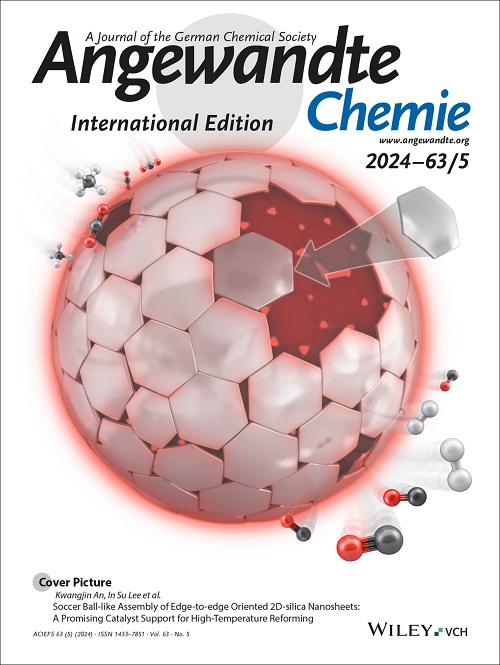通过 DFT 计算和机器学习筛选将 NO 电还原为 NH3 的银基单原子合金催化剂
IF 16.1
1区 化学
Q1 CHEMISTRY, MULTIDISCIPLINARY
引用次数: 0
摘要
探索对 NH3 具有高活性和高选择性的 NO 还原反应(NORR)电催化剂对于去除 NO 和合成 NH3 都至关重要。单原子合金(SAA)催化剂因其卓越的电催化活性而备受关注。然而,由于缺乏对催化性能快速而可靠的预测,对 SAA 的探索受到了阻碍。为解决这一问题,我们全面筛选了一系列掺杂过渡金属原子的银基 SAA。这一筛选过程涉及回归机器学习(ML)算法和以密度函数输入为参数的压缩感应数据分析方法。结果表明,Cu/Ag 和 Zn/Ag 能以较小的Φmax(η)(Gmax(η)描述符的大规范适应)有效地激活 NO 并使其氢化,而且与 H 原子相比,它们对 NO 的亲和力更高,从而抑制了相互竞争的氢进化反应。NH3 的选择性主要取决于费米级附近掺杂单原子的 s 轨道。SAAs 的催化活性与活性位点的局部环境高度相关。我们进一步量化了这些活性位点的内在特征与 Φmax(η) 之间的关系。我们的工作阐明了 NORR 对 NH3 的作用机理,并为筛选高活性 SAA 催化剂提供了设计原则。本文章由计算机程序翻译,如有差异,请以英文原文为准。
Screening of Silver-Based Single-Atom Alloy Catalysts for NO Electroreduction to NH3 by DFT Calculations and Machine Learning
Exploring NO reduction reaction (NORR) electrocatalysts with high activity and selectivity toward NH3 is essential for both NO removal and NH3 synthesis. Due to their superior electrocatalytic activities, single-atom alloy (SAA) catalysts have attracted considerable attention. However, the exploration of SAAs is hindered by a lack of fast yet reliable prediction of catalytic performance. To address this problem, we comprehensively screened a series of transition-metal atom doped Ag-based SAAs. This screening process involves regression machine learning (ML) algorithms and a compressed-sensing data-analytics approach parameterized with density-functional inputs. The results demonstrate that Cu/Ag and Zn/Ag can efficiently activate and hydrogenate NO with small Φmax(η), a grand-canonical adaptation of the Gmax(η) descriptor, and exhibit higher affinity to NO over H adatoms to suppress the competing hydrogen evolution reaction. The NH3 selectivity is mainly determined by the s orbitals of the doped single-atom near the Fermi level. The catalytic activity of SAAs is highly correlated with the local environment of the active site. We further quantified the relationship between the intrinsic features of these active sites and Φmax(η). Our work clarifies the mechanism of NORR to NH3 and offers a design principle to guide the screen of highly active SAA catalysts.
求助全文
通过发布文献求助,成功后即可免费获取论文全文。
去求助
来源期刊
CiteScore
26.60
自引率
6.60%
发文量
3549
审稿时长
1.5 months
期刊介绍:
Angewandte Chemie, a journal of the German Chemical Society (GDCh), maintains a leading position among scholarly journals in general chemistry with an impressive Impact Factor of 16.6 (2022 Journal Citation Reports, Clarivate, 2023). Published weekly in a reader-friendly format, it features new articles almost every day. Established in 1887, Angewandte Chemie is a prominent chemistry journal, offering a dynamic blend of Review-type articles, Highlights, Communications, and Research Articles on a weekly basis, making it unique in the field.

 求助内容:
求助内容: 应助结果提醒方式:
应助结果提醒方式:


